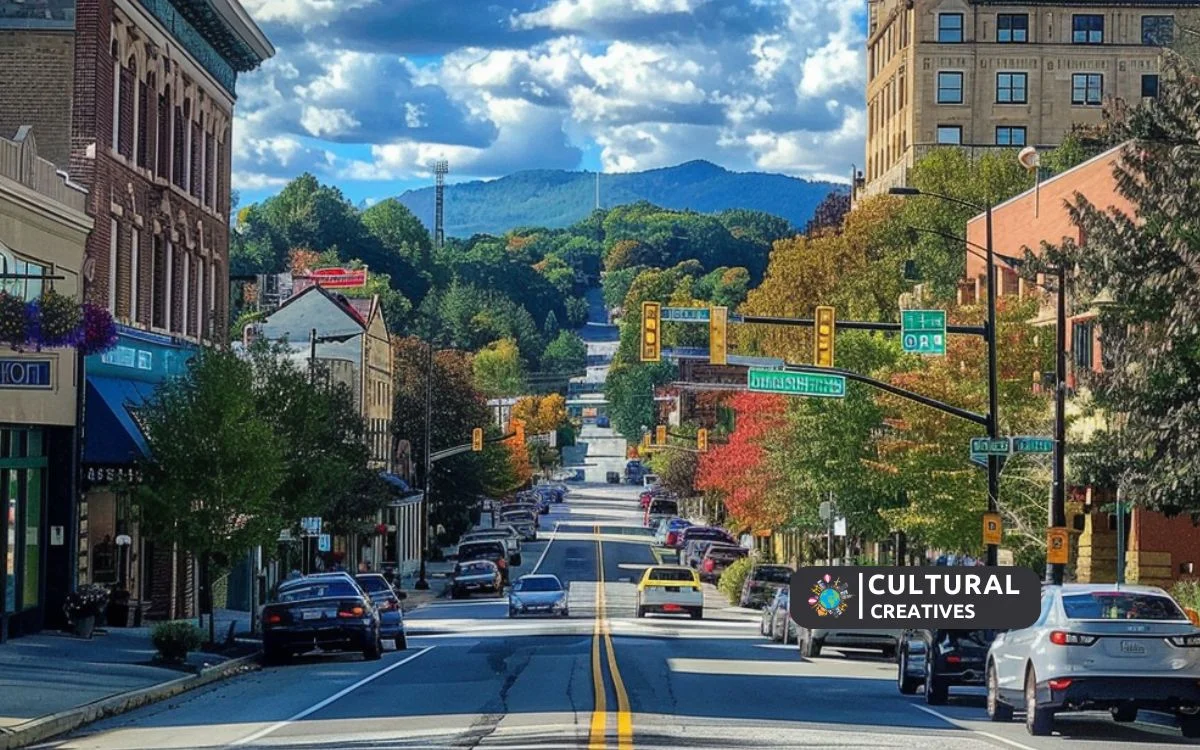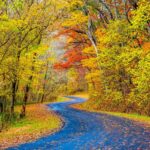So the mountains called, and you answered from Asheville – definitely SOUNDING BUSY over there! Design a trip that sounds like you; custom itineraries or spur-of-the-moment adventures, we’ve got all the options. Half the day will be (rightfully) spent participating in many of Asheville’s outdoor activities. you might be looking for the best view on a bench swing by some gorgeous waterfalls, or you are here to discover pet-friendly trials and the isolated swimming spots they have to offer.
Don’t miss the excitement with 360-degree bird-eye views on every zip line If you want to inhale even more of Asheville’s clean, cool mountain air, a longer trip along the Blue Ridge Parkway or an all-day kayak rodeo on the French Broad River – Asheville is just where your thirst for adventure begins before heading out for some of the nation’s premier whitewater rafting.
Ashville on the other hand has a plethora of indoor attractions too. First-timers will want to visit the Biltmore Estate, set across 8,000 sprawling acres (accommodation at one of the city’s best bed-and-breakfasts right on this estate is a strong recommendation). Downtown galleries or local artists hard at work in the River Arts District will beckon you during your visit and stimulate your creative influences. Whether you want to visit some of the 50+ breweries that have made Asheville’s brewery culture world-famous or take a deep dive on an all-inclusive beer tour. From retracing the path of a famous author to slipping into an impromptu bluegrass jam or riding down a natural waterslide, there’s so much to do that you won’t need to worry about what time it is – you’re on mountain time.
Top Things to Do in Asheville
1. Biltmore: Essential Visitor Information

Before notching up circular walkways and stairwells through the Biltmore house, be aware that there are no facilities available within; it is best to stop at the public restrooms located by way of a short circuit near the Stable Café. Completed in 1895, this grand estate is the largest private residence in the U.S. at 250 rooms. Its 8,000 acres were designed by the great Frederick Law Olmsted and include nature trails through lush gardens as well as a winery.
The estate, which once spanned more than 125,000 acres was sold after George Vanderbilt’s death in 1914 (some of it becoming Pisgah National Forest.) The rich history of the estate is further highlighted by its role in guarding art during World War II and having opened a winery decades later during the 1970s. Guests also have the option of staying overnight in a suite, apartment or on-site cottage while engaging with any seasonal events that may be taking place.
While admission to Biltmore ain’t cheap, it does include extensive access across the estate as well as an audio-guided house tour. And new for 2024, all tickets will now include a return pass free of charge to the site on the day after that of admission. Younger guests are also entitled to their discounts.
Biltmore is a drive, though—it’s a couple of miles from Asheville proper along Highway 25. “Onsite parking and our shuttle service also help lessen the burden of visiting.” Seasonal keynotes and dining are just some of the additional features available to guests who take a tour.
2. Exploring the Blue Ridge Parkway: A Scenic Adventure
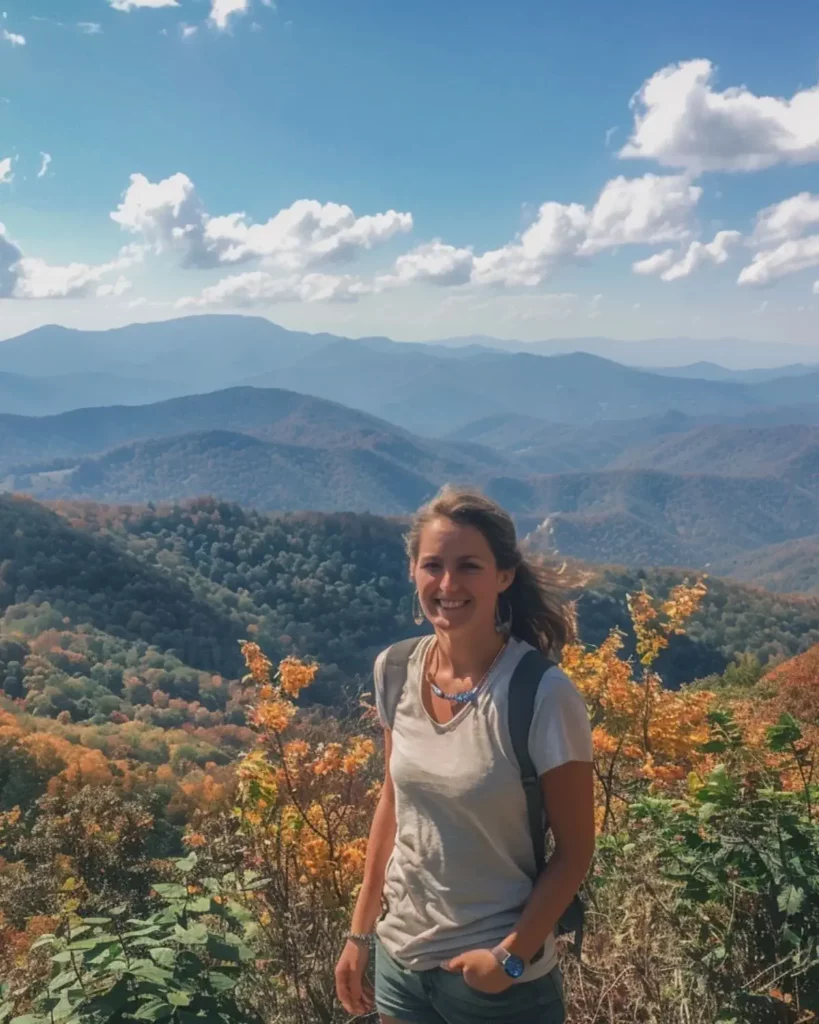
The 469-mile Blue Ridge Parkway traverses about 250 miles of western North Carolina, from its start in Virginia to its end at the Great Smoky Mountains National Park along the Tennessee border. It’s a slow process though — max speed is 45mph. It also provides road trippers with plenty of depth to stop currently overlooks, cute mountain towns and copious amounts walking and biking trails. Mile markers increase as one moves south along the parkway.
The main visitor center, near Asheville at milepost 384, is that hub. Here visitors can learn about the natural and cultural histories of the area while also learning what else there is to do outside. And you don’t have to travel the parkway’s entire distance to visit nearby attractions and explore a number of trails like those at Craggy Gardens and Mount Mitchell State Park. To help get you on your way, the Blue Ridge Parkway Association has excellent smartphone app with a great guide and map that includes not only trials but also gas stations, overlook and more. The app can be downloaded free of charge
Recent visitors countered, however, that the parkway is best experienced while driving and praised the many picturesque overlooks sprinkled along this stretch of asphalt as a must-do in Asheville. You may also want to pick up some picnic supplies before you head out on your drive or bring along food if many rest stops are closed.
Yes! Most attractions on the parkway is free, and driving on the parkway has no charge. And just know, some attractions—such as National Park Service visitor centers—might close when the weather is bad or during winter months. They choose to temporarily close down parts of the highway for safety or maintenance. For more information and the latest updates on closures, visit National Park Service websites.
3. Craggy Gardens: A Blue Ridge Parkway Gem
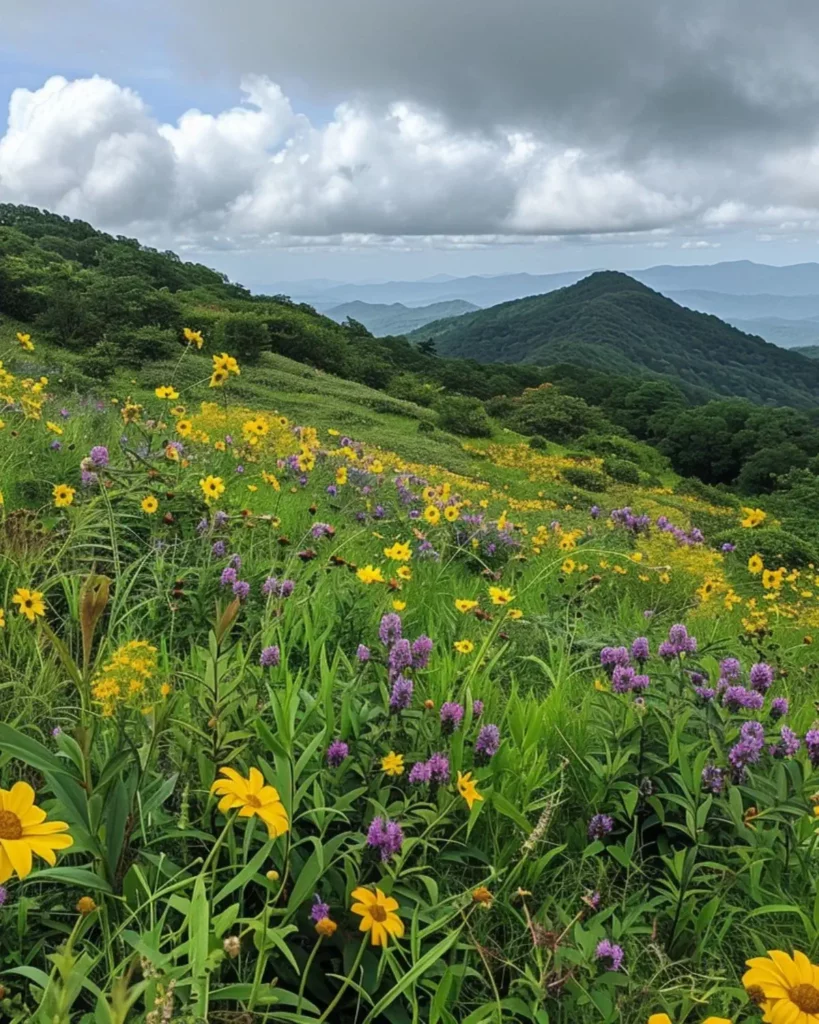
Craggy Gardens, milepost 364 on the Blue Ridge Parkaway has some of the best wildflower viewing in the area. By June, the landscape comes alive with masses of rhododendrons, thatch mingling with evergreen scenery, creating naturally constructed tunnels from twisted roots and branches. The beauty of the trail is only rivaled by its panoramic vantage points atop the mountain.
Walk the Trails of Craggy Gardens The drive starts from the Craggy Gardens Visitor Center; there you’ll find your way to a 0.3-mile concourse called the Craggy Gardens Trail, ending at one of its shelters. A short spur trail continues from there, climbing up to a bald–a hilltop clearing that is common in the Southern Appalachian landscape–with wide open views of the Black Mountain Range. There is also additional access from the Craggy Gardens picnic area (for those of you looking to make this a little longer hike). Some of the other top trails in the area are Douglas Falls and Craggy Pinnacle — popular with both locals and tourists. A seasonal visitor center is open, featuring information about the natural history of the site.
What’s interesting is how many visitors regularly comment on not just the allure of Craggy Gardens’ views, year-round with or without its blooming constituent included. Although the primary trail is short and relatively easy to hike, it sometimes gets slick — wear strong hiking shoes.
Craggy Gardens is open all year without an entry fee and no opening hours. Facilities: Trails, Scenic overlooks, Seasonal picnic area and Visitor center.
4. Grove Arcade: A Historical Hub of Commerce and Culture

Only one hundred years ago, The Omni Grove Park Inn’s creator, self-made millionaire E.W. Grove concluded another of his endeavors that he named “the most extravagant building in America”. That’s the Grove Arcade, or what may have been America’s first enclosed shopping mall. From being a military base during the Great Patriotic War, to serving as the place for National Weather Records Center, it was restored to its original destination. Now each consecutive venue on the lower level of the arcade is abuzz with perhaps its highest concentration of galleries, after-works drinks (and food offerings no less) and stores all treated to a VIP edge these days.. The majority of upper space is allocated to offices, some for residential areas.
The visitors who are particularly fond of architecture treasure the Grove Arcade! Many advise taking the self-guided tours to experience this historic building and learn a bit more about it. The site also provides a nifty escape into the cooler during warmer months. The arcade, which especially serves as a cherished place for both tourists and locals – houses the Battery Park Book Exchange & Champagne Bar.
Located right in the heart of downtown Asheville, The Grove Arcade is easily within walking distance from wherever you’re staying Parking is available in the Wall Street parking garage, located directly across from the south entrance of The City Market on the west side of Delaware. Monday – Saturday 9:30am – 7pm, Sunday 10am-5 pm (individual business hours vary) Again, to have the most complete experience be sure to verify specific store hours.
5. Winter in Ashevile: Things to do During the Chillier Months
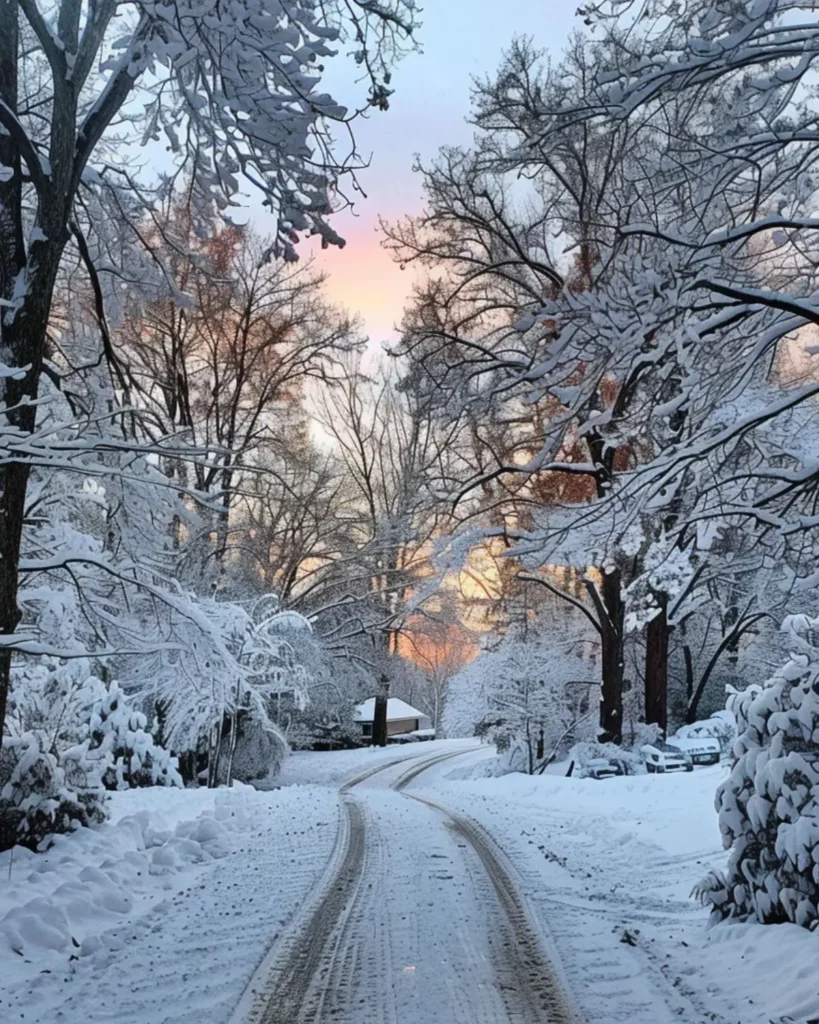
On the flip side, even though Asheville winters are generally mild (the average annual snowfall is just 11 inches) However, just because it is cold, usually somewhere in the 30s to 50s doesn’t mean you can’t go outside! Although you can still hit the hiking trails, for those of us who want to carry on exploring without leaving our car, doing a drive-by visit down local waterfalls will not disappoint this winter. All of these can be seen from the roadway, but the usually waterfalls that everyone stops to take pics at a Looking Glass Falls, Socofalls and Glassmine Falls!
While you’re driving along the Blue Ridge Parkway, in winter months there will be many amazing views which are covered by snow due to which your journey becomes memorable. In the evenings, you can opt for a cozy cabin to sleep in or unwind with all of your favorite treatments at Omni Grove Park Inn’s characterful spa. Whether or not you find yourselves in the path of a white Christmas, still be sure to make time for these activities that perfectly encapsulate Asheville’s winter wonders – offering the perfect mix between adventure and relaxation!
6. Pisgah National Forest: A Bastion of Natural Art and Adventure
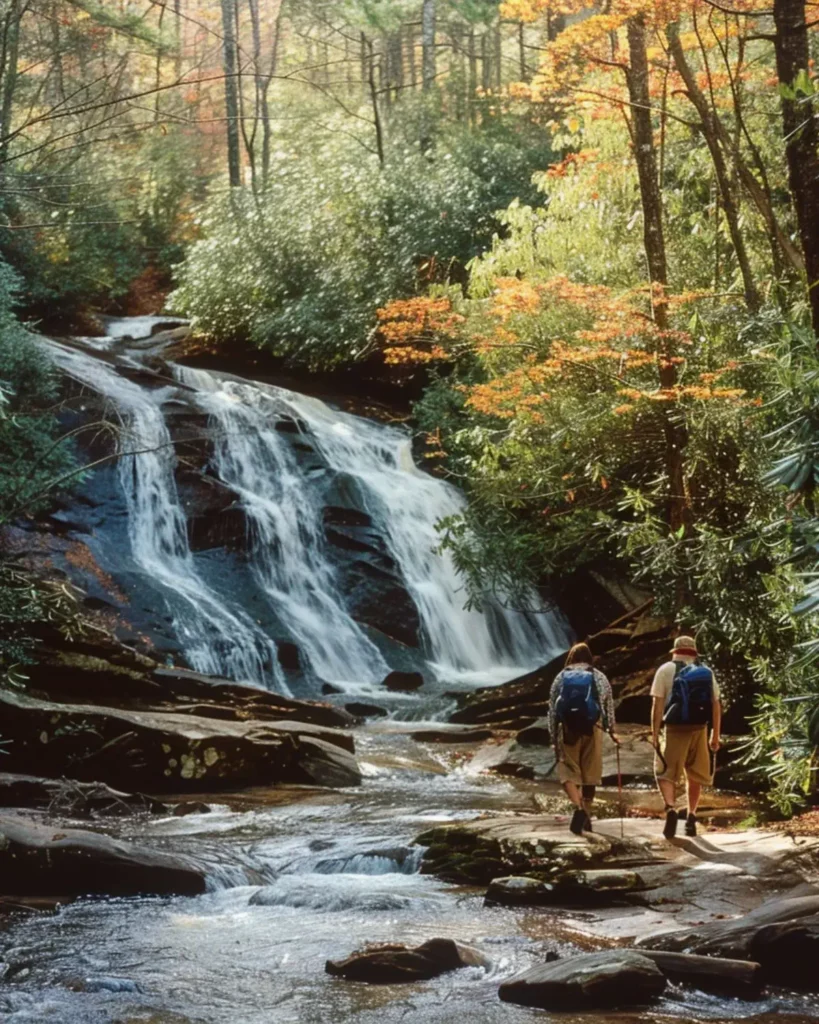
Approximately 30 miles (48 km) southwest of downtown Asheville, Pisgah National Forest covers more than half a million acres and serves as an outdoor oasis with boundless activities amid beautiful surroundings. These paths weave through hundreds of miles of the forest, often to hidden waterfalls and cool swimming holes. There’s seemingly no end to how you can find nature here!
As an urban forest, this was one of the first national forests in the United States and created on land previously owned by the Biltmore Estate; today it remains rich with history. It is home to the first forestry school in the nation and the Pisgah Astronomical Research Institute (PARI), which includes Mount Mitchell, just west of Burnsville, at 6,684 feet (2.037 km), it is the highest point east of the Mississippi.
Visitors regularly cite the nature reserve’s excellent hiking paths and scenic waterfalls as perfect venues for a day out with the family. Popular attractions along this highway include Looking Glass Falls and Sliding Rock. For those who don’t want to hike the forest there are opportunities for horseback riding, biking and rock climbing. While fishing, picnicking and camping remain popular in the gentle slopes of tree filled park. This forest also contains some of the most thrilling whitewater rafting tours in North Carolina.
There is no charge for entrance to Pisgah National Forest or the state parks that fall under its care. A car is required to get around the forest, but it’s easy to access with major highways running through it and a 45-minute drive from Asheville to beautiful Pisgah Ranger Station/Visitor Center (Exits located at mile markets 408 or 412).
7. Asheville Breweries: A Center for Craft Beer Counterculture

Asheville is often referred to as the beer capital of the Southeast with over 50 breweries calling this region home! Today, that booming craft beer scene is a huge draw for Asheville residents and tourists alike — people who relish the opportunity to drink their way through this smattering of breweries.
Read more: How to Experience Asheville’s Beer Scene in an Engaging Way Options include a self-guided walk on the Appalachian Ale Trail, pubcycling with Amazing Pubcycle or leaving the driving up to Asheville Brewery Tours.
Asheville’s array of beers and brewery experiences is only matched by the diversity of beer throughout the city. And we mean everything — from the city’s original brewery, Highland Brewing Company, to Wicked Weed’s Funkatorium; a facility that specializes in creating sour beers. (You can’t make this stuff up!) If you’re looking for something different, try Asheville Pizza & Brewing’s films to view with your pint. Conversely, Green Man Brewery’s new Green Mansion offers plenty of room for not only beer geeks but also families and the furry members of your family. The spacious three-story, 20,000-square-foot property accommodates both parents with energetic children and those who are companioned by wagging tails.
Asheville’s reputation as a beer destination has only grown, with major breweries such as Sierra Nevada and New Belgium opening their East Coast bases nearby too. Each of these locations boasts a large taproom—many of which are tourist destinations in their own right—with stunningly designed outdoor spaces, restaurants, food trucks, tours of the facilities and live music.
Keep in mind, with the continued addition of new breweries and tasting rooms, it never hurts to ask a local where they recommend going for their favorite brews!
8. See more at Sliding Rock: Nature’s Very Own Waterslide in Pisgah National Forest
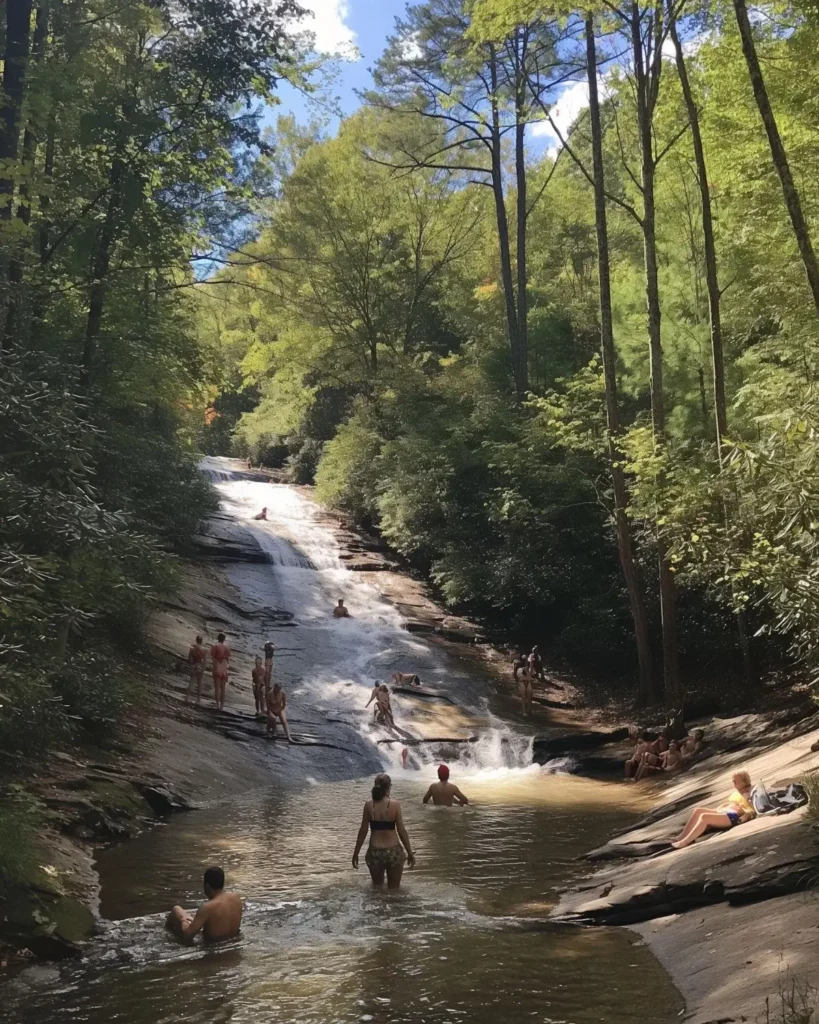
Sliding Rock is an exhilarating natural waterslide in Pisgah National Forest. The popular site serves as a waterslide, where water rushes down the 60-foot long sloped rock face at 11,000 gallons of flow per minute for a final splash within an 8-feet deep catch pool. That is why it remains a top choice for several tourists who wish to have the enjoyment of pleasure and adventure in nature forest. The site is managed by Adventure Pisgah during the summer months. After Labor Day it becomes a use-at-your-own-risk attraction without a lifeguard on duty.
Having experienced Sliding Rock, guests generally report enjoying and remembering their visit well. Many suggest visiting it as part of an essential family vacation itinerary. Otherwise, travelers caution that the crowds here are often unbearable. Even so, they also report that the water remains cool and refreshing even during summer months; you should avoid peak hours (likely between noon and 4 p.m.) to secure parking and escape large groups of tourists. Visiting on a weekday can also be helpful, and it’s wise to bring aqua socks along with either a rash guard or swim shirt for added comfort.
Sliding Rock is open 9 a.m. to 6 p.m. daily from Memorial Day weekend through Labor Day, and admission costs $5 for each person who enters the park. We accept both card and cash payments, but we prefer that all our transactions are made via cards. Located approximately 40 miles to the southwest of Asheville, additional information about Sliding Rock may be obtained on the U.S. Department of Agriculture’s website and Adventure Pisgah’s website.
9. Mount Mitchell State Park: High Adventure at a High Elevation (with Great Views)

A hike that would not be complete without mentioning Mt. Mitchell, if you are touring the Blue Ridge Parkway in search of mountainous viewpoints like these you can’t skip Mount Mitchell State Park! With the highest peak east of the Mississippi River here, 6,684-foot Mount Mitchell renders this park a popular attraction for humans. What sets Mount Mitchell apart from many other high peaks is, it can be reached in the comfort an automobile. Accessible via a 4.5-mile paved route off the Blue Ridge Parkway, the dome houses one terminus of the Linn Cove Viaduct, and an observation area at its summit provides 360-degree views over much of the region – sometimes extending up to 85 miles in clear conditions — with spans as far away as Charlotte visible under favorable visibility conditions.
Hiking Opportunities
Mount Mitchell has 40 miles of trails for all skill levels. Balsam Nature Trail (less than 1 mile, moderate) The highest spring in the eastern United StatesIFDEF Go on the Old Mitchell Trail, a 4-mile round trip backtrack that retraces the footsteps of early-20th-century pioneers on this historical trek. Or, there’s the cheek-puckering 2.1-mile Deep Gap Trail along the ridgeline to Mount Craig, which provides hikers who enjoy a tough scramble with other options as well.
Many visitors rave about the view from the park and advise others that you need some cash to go into the gift shop. If you have mobility problems, be aware that the way to the observation deck is fraught with hardships. Also, keep in mind temperatures on the summit can be 15 to 20 degrees cooler than lower elevations; throughout summer visitors should dress in layers.
Admission to Mount Mitchell State Park is free, and the park is open every day of the year except Christmas. The park is open year round but hours of operation are by season. The park opens usally at 7am and has a museum displays, an operating (from May through October) shop, restrooms and seasonal camping opportunities It’s situated 30 miles northeast of Asheville at mile marker 355.4 on the Blue Ridge Parkway, and you can learn more about what to expect from the park by checking out its website.
10. River Arts District: The Heart of Asheville’s Growing Cityscape

Asheville’s River Arts District, or RAD if you prefer, is almost unrecognizably different than what it was in the mid-1980s when the early bird artists were buying up turn-of-the-century industrial buildings situated along the by then largely ignored French Broad River. What had started as a small consortium of studios has snowballed into nearly 300 artists from all areas. The transformation includes reimagined old industrial and historic structures (like the former tannery or cotton mill) turned artist studios, shops, eateries —whispers of a boutique hotel called The Radical. During the lengthy Open Studios weekends, visitors stroll amongst artists—some of whom are established creator in their discipline with work hung within the Smithsonian and local galleries Others are budding creators simply showing at open studios. It’s a great place to pick up a unique item to remember your trip or take part in one of its frequent workshops at the North Carolina Glass Center.
The art work may be a little more expensive for some, reflected in price complaints by tourists, but they rave about watching the artists at work and on the other side of this rear-industrial area being properly revived. Free parking is also abundant throughout the district along with many of its eye catching public murals
Usually studios and galleries are open from 11am-5pm or, alternatively, if they expand their hours from 10 a.m. to 6 p.m., it is often on Saturdays. The free ArtsAVL Connect Trolley provides transportation between Downtown Asheville and the River Arts District from noon until 8 p.m. on “Second Saturdays.” In addition, each fall the district holds its Studio Stroll (usually in November), with all studios open and complementary trolley service throughout the area.
Where is this? Just 2 miles west of downtown Asheville in the River Arts District (directions) For a more curated tour, peruse the River Arts District Studio Guide which includes studio descriptions and hours, contact information and other helpful suggestions.
11. Appalachian Trail in North Carolina: A Hilers Dream
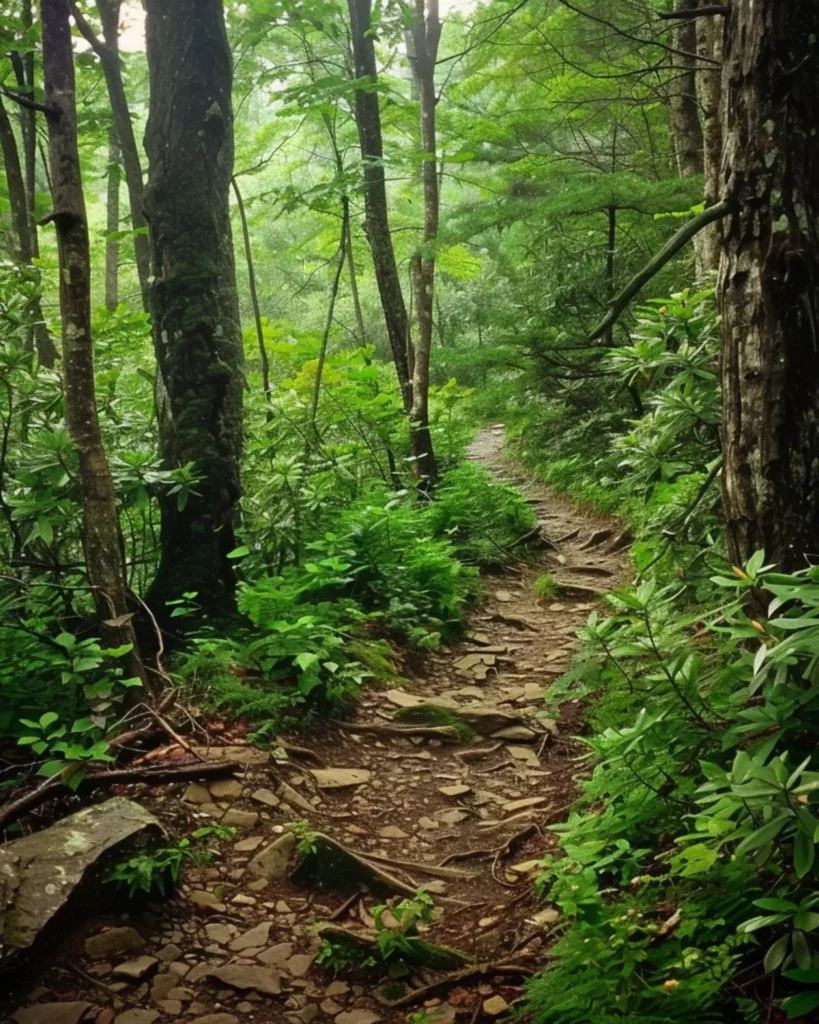
The Appalachian Trail—or AT— is one of the most famous long-distance hiking trails. The entire trail runs from Maine to Georgia and covers 2190 miles that run through 14 states North Carolina Trail of About 323 miles (Including locations about 226.6 miles with Tennessee in boundary)
In fact, the North Carolina section is home to some of the highest points along the AT – several of which rise more than 6,000 feet above sea level. Finally, please note that if embarking on a multi-day trek, permits may be needed especially in the Great Smoky Mountains National Park locations to ambitious hikers.
Something that’s a bit shorter is checking out Hot Springs, North Carolina. It’s about 35 miles northwest of Asheville and the AT goes directly through this neat little town on Bridge Street From the Silvermine trailhead, hikers can enjoy portions like the picturesque Lover’s Leap Ridge or choose instead to hike a 1.6-mile mini loop known as Lover’s Leap Loop. Although it can be a little tricky, the reward is well worth all of the effort. Take I-26 North to Highway 25 North and you’re there!
In addition, the AT walks over Max Patch in Hot Springs’s Harmon Den segment. Two more manageable loop trails (1.4 and 2.4 miles) depart from there to reach the summit at 4629 feet, offering expansive views of southern landscapes beyond both Mount Mitchell to the west and Great Smoky Mountains National Park on North Carolina’s eastern border. The broad, grassy expanses of Max Patch are perfect for a picnic. To get there, take Highway 209 and follow the state roads to Max Patch Road.
12. Adventure Awaits on the French Broad River in Asheville

You don’t even have to travel the nearby Blue Ridge Parkway (though you should) to find something fun and exciting. The city is situated along the French Broad River, providing plenty of action in its downtown hub. The French Broad, one of the world’s oldest rivers, originated in Rosman, North Carolina, but flows north to Tennessee – an incredibly unique perspective for any outdoor lover.
River tours and activities
Tubing, kayaking, stand-up paddleboarding and fishing are among the popular ways to while away an hour (or six) on this 73-mile stretch of water. One of the most highly-respected operators for all three is French Broad Outfitters, which offers self-guided tours and rentals. Zen Tubing is an option for those looking to rent their tubes; for stand-up paddleboarding, Wai Muana offers a variety of options and can help you get on the water if you need a lesson
French Broad Adventures, merely 30 minutes outside of downtown Asheville, offers a plethora of choices for adventure seekers. The operator provides the closest whitewater rafting to the city as well as offers zip-lining, canyoneering, off-road e-biking and climbing. Can we combine a zip line tour with another activity for a full day of excitement, such as an early morning zip line tour and then cap off the afternoon with some exciting white water rafting?
If you’re looking for a more laid-back ranging, take in the river views at leisure during a riverside bicycle ride, skate or promenade along the Wilma Dykeman Greenway within Asheville’s River Arts District. Hugging the east bank of the French Broad River, this 2.2-mile paved path meanders past art studios, shops and eateries.
Providers’ respective activity rates and operating hours can differ by several orders of magnitudes, often seasonally and depending on the weather. If you’d like to plan a visit, or learn more about everything else that the French Broad River has to offer, you can visit the Asheville tourism board’s website. For the list of the best whitewater rafting tours in North Carolina, however, check with local listings.
13. Your Guide to The North Carolina Arboretum: Where Nature Smiles

South of downtown Asheville, 10 miles off the Blue Ridge Parkway at milepost 393, the North Carolina Arboretum meanders over some 434 acres inside Pisgah National Forest. Natural Museum This 65-acre cultivated garden features one of the largest bonsai collections in North America and is home to two classic Victorian seri! houses. More than 10 miles of hiking, bicycling, and walking paths offer visitors a close contact with The Living Collection.
If you’re timing your visit with the holiday season, be sure to check out the arboretum Winter Lights event, which lights up more than a million twinkling lights throughout the gardens in an enchanting walk-through display.
Recent visitors often comment on the beautiful and extensive bonsai exhibit, as well as their experience hiking along the trails. Springs for Families at the arboretum also boast a wide array of youth activities. Through both ecoEXPLORERS citizen science program and the TRACK Trail Guide, kids can learn about nature while being inspired by their inner naturalists.
Although there is no admission fee to the arboretum, per-vehicle parking is $20, according to its website. Before going to the arboretum, head over to their website and check if there are any special events or other exhibits happening so you can make your visit even better.
14. Folk Art Center on the Blue Ridge Parkway

You’ll also enjoy another indoor stop near milepost 382 at the Folk Art Center, which houses headquarters of the Southern Highland Craft Guild. Founded i n the 1930s, it remains one of the few guilds in Southern Appalachia that actively embodies this mission.
The Folk Art Center features work in the traditional and contemporary craft of members of Southern Highland Craft Guild. View three galleries, shop our retail store and explore Allanstand Craft Shop. It also houses a bookstore, the parkway information desk, a library and the Allanstand Craft Shop — named after Asheville industrialist Fred Loring Seely’s wife; it is America’s oldest continuously-operated craft shop. Through December, the center provides daily craft demonstrations from March to each day for visitors to connect in more meaningful ways. Seasonal craft events are particularly popular. So, if you happen to be in town when the Craft Fair of the Southern Highlands comes to Harrah’s Cherokee Center-Asheville each July and October (it draws some 11,000 visitors a year for work by more than 200 artists), make sure it’s on your itinerary.
As recent visitors to the Folk Art Center in Asheville attest, it’s certainly a destination worth checking out. Past travelers highly recommend you spend some time exploring the center, given its outstanding craftsmanship and variety on display. The center is open daily from 10 a.m. to 5 p.m., and admission and parking are free.
15. Visit the Western North Carolina Nature Center: A Gateway to Appalachian Wildlife

Less than 5 miles southeast of downtown Asheville, the Western North Carolina Nature Center is a must-visit destination for kids of all ages (especially those dragging their weary parents) or anyone itching to get up close and personal with Appalachian wildlife. The center is home to about 60 animal species, none of which are invasive — all of them are native or once-native to the area. The center serves as a home for many of the resident animals, such as black bears, river otters and foxes. Most arrive at the facility to receive care after being injured or developing imprinting, rendering them incapable of living in the wild on their own! Warning: The red wolves may be the most critically endangered wolf species on Earth.
Visitors often mention their appreciation of this center, including being able to get close-up looks at animals like wolves and red pandas. Shaded pathways and friendly educational staff make for a truly delightful family-friendly place to visit. There are also amenities that cater to children, ranging from Montessori-inspired play spaces, a gem and fossil mining attraction on the second floor and daily animal programs offered for free that excite even the littlest of minds.
The Western North Carolina Nature Center is open 10 a.m.-4:30 p.m. every day, with the last entry at 3:30 p.m. General admission costs $13.95 for adults and youths ages 13 and up; $12.95 for seniors; and $9.95 for kids aged three to 12, while children under two are free. For additional information about the exhibits, special events and educational programs at Sarett Nature Center can be found by visiting their website.
16. Lexington Glassworks-artisan Craft in Smiles!

Lexington Glassworks is an art lover’s destination, right near downtown Asheville. With an open-door policy, this studio and gallery will be sure to interest the enthusiast as you watch expert glass artist perfect their craft. [SITE] offers a varied selection of glass—from functional drinkware to gift market ornaments and all in between, it is the perfect venue for building an unforgettable memento or simply finding that special something. As for fans looking to bring a sense of sophistication into their home, the Lexington Glassworks Lighting Design Studio provides consultation and design solutions for custom glass lighting e.g., pendants that can change any room in your home.
Lexington Glassworks is frequently cited by visitors as a top Asheville attraction, lauded for the caliber of glass and the gracious staff in addition to being an opportunity to witness highly captivating craft work. Another thing to love about the festival is that many local spots are closed on Tuesdays, so it’s a nice regular midweek option. It opens easily too!
Located a couple blocks off the beaten path in downtown Asheville’s South Slope district, Lexington Glassworks is a short walk from Downtown and has street parking as well as access to public parking at nearby garage. The studio and gallery are open daily from 10 a.m. to 6 p.m., Monday through Saturday, with Sunday hours beginning at 11 a.m. To learn more about the artists or their exhibitions and special events, please visit the Lexington Glassworks website.
17. LaZoom Comedy Bus Tours: A Funny Meeting of Humor and History

LaZoom Comedy Bus Tours in Asheville combine historical tidbits about “Beer City” and ghost legends with a heavy dose of comedy. Popular shows include the city-wide tours, Haunted Comedy Tours, Band & Beer Tour and Kids’ Tourseum tour From there, guests board the company’s whimsically purple-colored buses for a ride through downtown and the surrounding neighborhoods while being entertained by hilarious characters who keep them laughing throughout their journey. LaZoom offers several tours including the popular 90-minute Asheville City Tour (appropriate for ages 13 and older), a one-hour haunted comedy tour filled with frightful fun for those over the age of 17, in addition to their three hour brewery tour suitable only for adults ages 21 and up as well as a family-friendly one-hour Kids Comedy Tour.
And the tours have been a hit with tourists and folk who call Armidale home – cracking along with laughs and wit. Popular comments include the guides’ sense of humor, whenever one met a character on the ride- it solidifies LaZoom as many peoples’ top choice for touring something exciting and fun to introduce their out-of-town guests an untypical side of Asheville.
All of our tours start at the LaZoom Room in downtown Asheville! What: Onsite parking available at $3 per hour (for those driving), but check here for other options. The closest garage is the Aloft Hotel Parking Garage. Daily tours are offered, and times vary depending on the type of tour you choose. Ticket prices are from $27 each and vary according to the tour. You can visit LaZoom’s official website to review the complete schedule as well other related information.
18. Asheville Pinball Museum: A Retro Gaming Haven

Anyone who wants to embrace, or re-embrace, the pleasures of old-fashioned gaming would be unable to resist a trip to the Asheville Pinball Museum. Featuring a lineup of 35 pinball machines and 35 vintage video games, it really is a kid’s playground — regardless of how old you are. What’s more, the museum sports a rotating array of functioning arcade pieces; some are from the 1960s, while others stretch back all the way to the ’30s. Standout rare games include an original “Star Wars” cockpit, “ Dragon’s Lair ” and a 1979 Atari Football game. While guests play, they can take advantage of sodas and a few snacks on offer as well as beer. With all that you can get lost in for hours. The maximum number of visitors allowed in the museum at one time is 65 so everyone gets an opportunity to play.
“Whilst the place is great for nostalgia,” they wrote. “It must be remembered that weather cancel[wills] other tours [places] and therefore you may find queuing here for a long time.” If you do not want to wait that long, go there on a weekday or when the weather is nice.
Open seven days a week in the heart of downtown Asheville, the museum is operating on a first-come-first-serve schedule with varying hours through the day. Entry will cost you $15 and gives you all-you-can-play access so it’s a bargain that way. It’s a flexible option for mixed-interest groups as non-players in your group do not have to pay. For more information on hours of operations and other special events, head to the Asheville Pinball Museum site.
19. Asheville Urban Trail: A Walk in the Heritage of the City
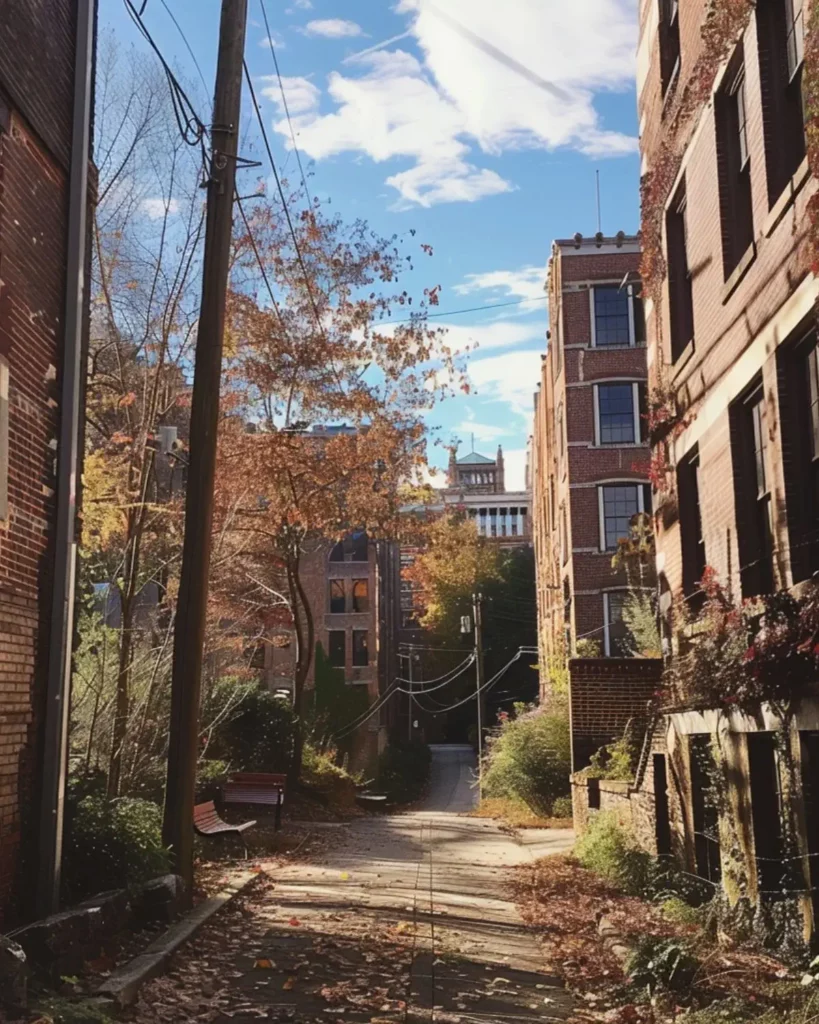
The Asheville Urban Trail is a 1.7-mile-long path that highlights the growth of this city seen in its culture and architecture. As people depart the neighborhood, they notice public sculptures of important snapshots from Ashevilles history; 30 artistic pieces dot the tour to designate specific and crucial times within assignment).
As I moved on, the self-guided tour is organized around five historical eras that run from the Gilded Age for later to what are called the 5Er’s: the current period known as “Age of Diversity” The trail will start at Pack Square, the center of downtown at Biltmore Avenue and Patton Avenue. The route then winds around downtown before finishing back in the square with that last bronze sculpture For visitors, the trail will take about two hours to complete at one stretch or cover it in different segments across several visits
Often visitors will comment that this is a fun thing for both kids and adults to do on the trail, making Asheville an activity instead of just a place. If you want a more in-depth walk, the Urban Trail’s website has a map of the trail that also offers audio descriptions of each station.
20. Botanical Gardens at Asheville: Natural Retreat near Downtown Explore
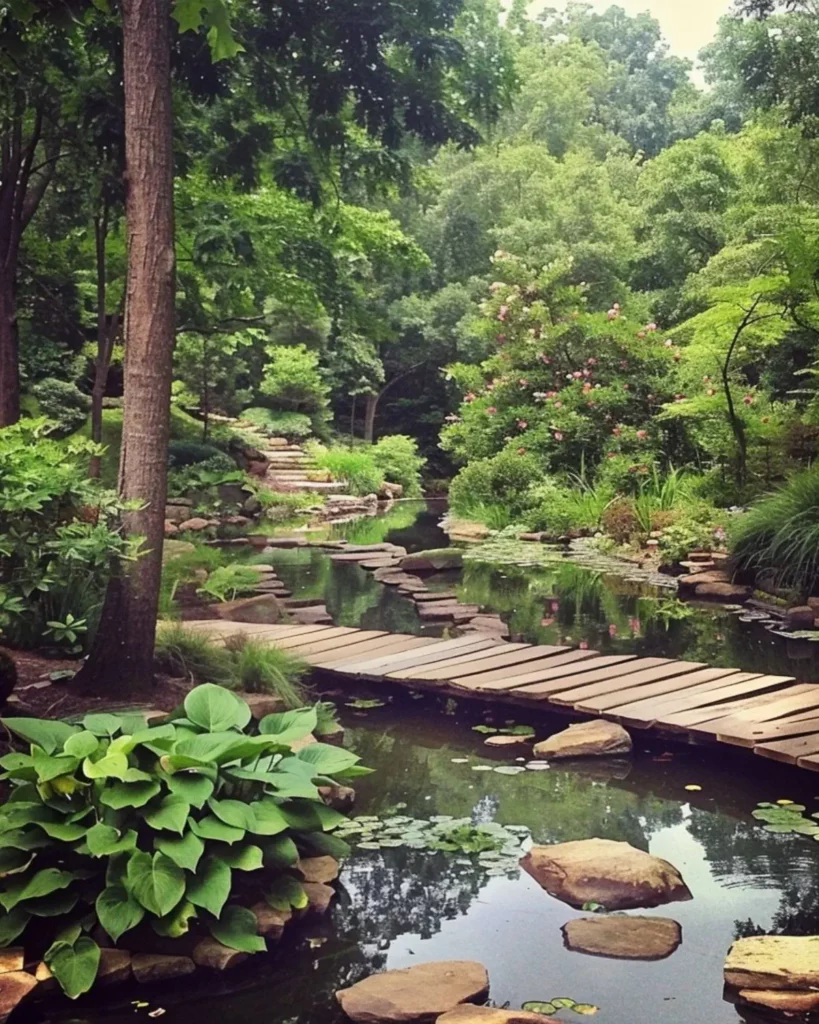
If you want to surround yourself with nature but remain close to the city, then the Botanical Gardens at Asheville are perfect. This 10-acre sanctuary is located just under 2 miles north of downtown, next to the University of North Carolina at Asheville, and offers one of the most extensive representations in Southern Appalachia of plant species indigenous to those mountains: Over 500 native plants are preserved here.
The garden’s primary loop trail is a little less than 1/2 mile uphill, but there are also additional gravel paths veering off for guests who want to explore further throughout the plantings. During the warmer months, visitors are welcome to bring a picnic and enjoy some time rock hopping and splashing in Reed Creek. Intermittent benches make for a nice place to relax and enjoy the peace of things. The gardens are especially colorful when wildflowers bloom in April and May and from mid-July through early fall. Young explorers can pick up a passport for investigation at the visitor center, which will get children focused on some of the tree-related diversity to be found in the garden and hone their observational skills.
The natural and untamed look of the garden, which many first-time visitors are quick to comment on. Unlike a curated or manicured botanical garden landscape, the SGFS is meant for viewing native ecology as it appears in nature with little human intervention. People often comment on the clarity of our signage and knowledge of staff too!
How to Get There: The gardens are about 2 miles north of downtown Asheville and can be reached by car or bus. Admission and parking are free, but donations to support this nonprofit organization are greatly appreciated. Gardens are open from sunrise to sunset, and the gift shop is open daily 10 a.m. – 4 p.m. Check the botanical gardens’ website for more on how to plan your visit.
21. Thomas Wolfe Memorial: The Family’s Homage to a Literary Giant

Downtown Asheville’s Thomas Wolfe Memorial offers a glimpse into the life of one of America’s most significant early 20th century authors. The house, built in 1883 and his mother’s boarding house served as the childhood home of Thomas Wolfe. The town is perhaps best immortalized (and lightly fictionalized) in Wolfe’s seminal novel, Look Homeward, Angel; a work that takes much of its background from the author coming-of-age experiences growing up in Asheville. A visit to this historic home will give you a much better sense into how his upbringing most likely defined many of his famous works. The visitor center next door has a gift shop and an exhibition on Wolfe’s life and work as well.
“Visitors frequently comment that the house reveals much more than an account of Wolfe’s own life, but serves as a reflection of Asheville’s past,” Ford said. “A ‘historic site’ designation doesn’t do justice to its reflective powers.” The tours have even proven interesting to people unfamiliar with Wolfe’s literature.
Located downtown, flanked by the Asheville Community Theatre and the Renaissance Asheville Downtown Hotel, the Thomas Wolfe House is open for tours from Tuesday to Saturday, 9 a.m. to 5 p.m. Tours run hourly at half-past each hour with last tour departing at 4:30 p.m.. Update July 2016: Admission is $5 per adult; students aged seven through high school are $2. For those who want a more comprehensive experience, the Thomas Wolfe Memorial has a downloadable walking tour of downtown Asheville with plenty of stops at locales relevant to Wolfe on its website.

